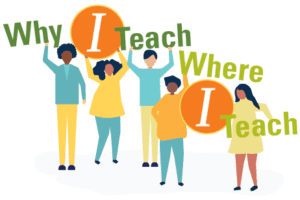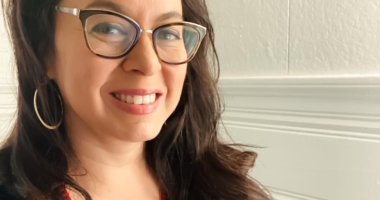Why I Teach Where I Teach: To Use My White Privilege to Close Opportunity Gaps
I teach English for Speakers of Other Languages (ESOL) at Argyle Middle School, which is five miles  away from the house I grew up in and in the same school district that I attended 13 years ago, Montgomery County (Md.) Public Schools (MCPS). In the six years that I have been at Argyle, I have seen many-a national headline and attended many-a professional development session about the opportunity gap that persists in the United States and in MCPS, even though it is often touted as one of the top school districts in the country.
away from the house I grew up in and in the same school district that I attended 13 years ago, Montgomery County (Md.) Public Schools (MCPS). In the six years that I have been at Argyle, I have seen many-a national headline and attended many-a professional development session about the opportunity gap that persists in the United States and in MCPS, even though it is often touted as one of the top school districts in the country.
During the current global health crisis, that opportunity gap has been exacerbated by inequitable access to meaningful learning. MCPS swiftly constructed processes to put devices — most, if not all, of which already existed in classrooms — in the homes of any of the 166,000+ students in need, even as other school districts scrambled to procure devices for the first time or came to terms with the financial restrictions that would not allow them to provide for their students. MCPS’s diligence appears to have paid off and continues to evolve as the district moves from ensuring that every student has a device to ensuring that students are using those devices and receiving the outreach they need in order to engage with distance learning efforts.
While much conversation has been focused on getting devices into students’ hands, it bears repeating that the opportunity gap was never rooted in the challenges of becoming “one-to-one.” If it were that easy, the students at Argyle who have daily access to iPads and 30 gigs of data would all be reading on grade level, and I could happily retire my ESOL teaching career right now, at the age of 30. Connectivity may be the first step, but the dearth of relevant and standards-aligned content making its way into homes is evidence that there is still much to be done to get all students on track for high performance beyond the K-12 sphere.
I subscribe to the notion that the opportunity gap was made by us (educators) and can be closed by us (educators). That different educators may have opened it from the ones who now maintain it is irrelevant. Educators chose to become a part of the system that is known for either imploding or upholding the so-called “American Dream,” and we thus chose to inherit the legacy that comes with it.
So, I teach at Argyle because I am adamant that a White, middle-class, heteronormative, cisgender, Christian, English-language-dominant, American-national upbringing is not the only way to experience academic success that can expand college and career opportunities for every single individual child, despite what data shows.
That privilege resonates as my colleagues and I forge ahead in our paid full-time work of a part-time nature while many of our students come from households where the breadwinners — the immigration statuses of whom you could guess since their children receive ESOL services and fit into national trends accordingly — must operate in a shadow economy that is equal parts essential and undervalued in the best of times. Now more than ever, that pyramid of “Maslow’s Hierarchy of Needs” from that one teacher certification course in college burns bright in my mind as my most pressing concern day-to-day is being lonely, while repeated interaction with students’ families reveals that they are hungry. I can only hope that the medical care for uninsured kids, which the Montgomery County government provides, is sufficient for any health concerns that arise with students. But I already know from my work with families before the pandemic that it won’t be.
While all this goes on, I am desperately staring down the idea that if the school that I teach in, which is full of dedicated administrators and educators like myself, with all of its access to resources that other districts in the nation can only dream of, cannot close the opportunity gap, then no one can. And I’m not willing to believe that.
Instead, I am quite taken with the 12-year-olds I spend my days with, whose demographics you could, again, correctly predict based on national trends, but that I’m not personally inclined to parade. Some of them have some aspects of the privilege I grew up with, but none have all. I am obsessed with creating a reality where their assets are not maligned by the oppressive deficit-thinking that permeates this nation’s concept of multilingual learners and that often relegates such beautiful, talented, skillful children to dark places with either demoralizing, spiteful rhetoric or good intentions. The narrative of multilingualism follows one trajectory for someone with my privilege (“Wow! You speak a language other than English? That’s amazing!”) and all too often another trajectory for my students (“Maybe if you stop speaking other languages at home, your English would be better”). I stubbornly think I can play a part in disrupting that narrative.
And whenever I encounter the frustrations and barriers that come with disrupting deeply held norms that favor autonomy and prejudice over collectivity and meaningful results, I find myself asking, “If not me and my colleagues at this school in this district, then who? And where?”
With that mindset, it’s sort of hard not to teach at Argyle.

